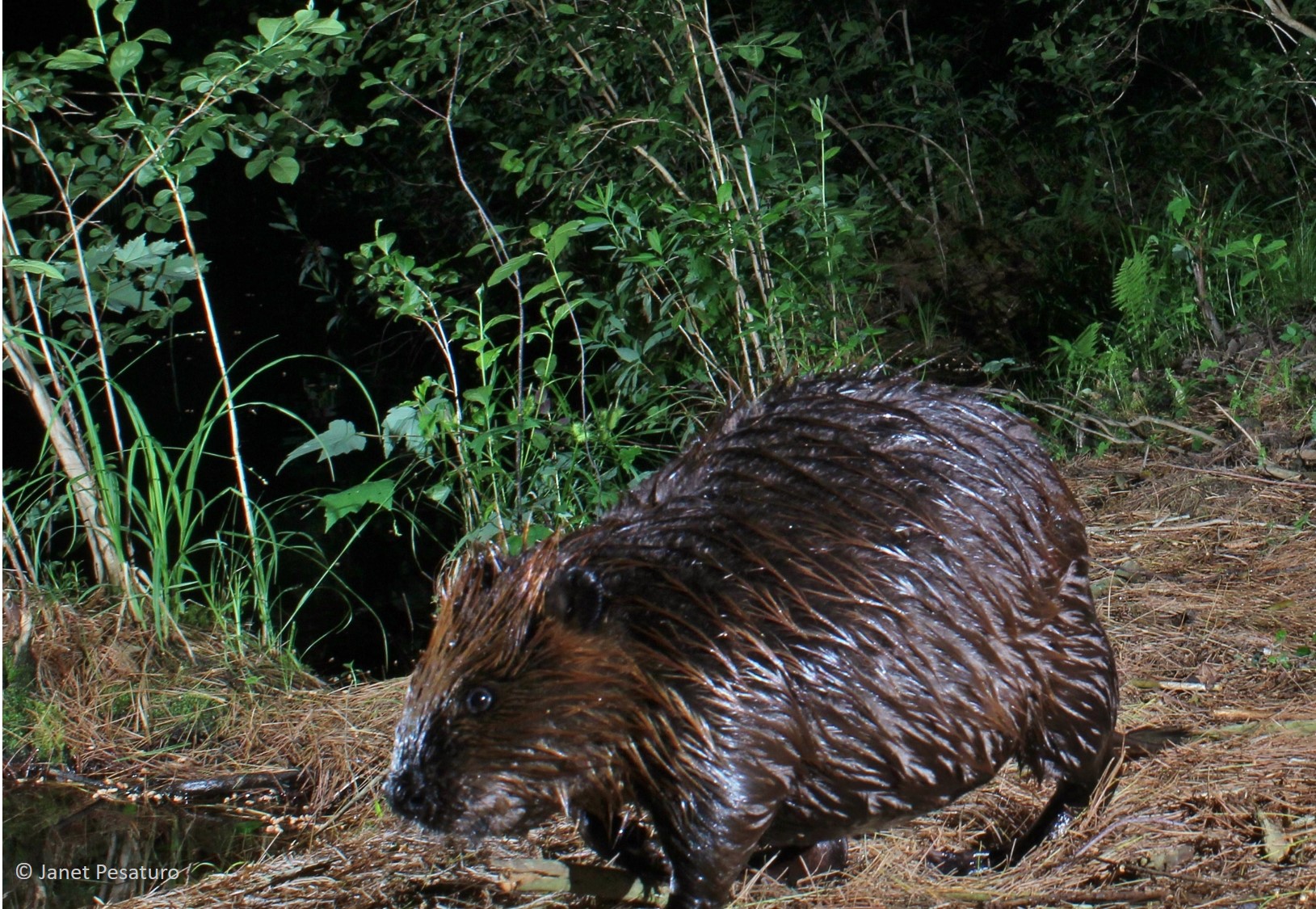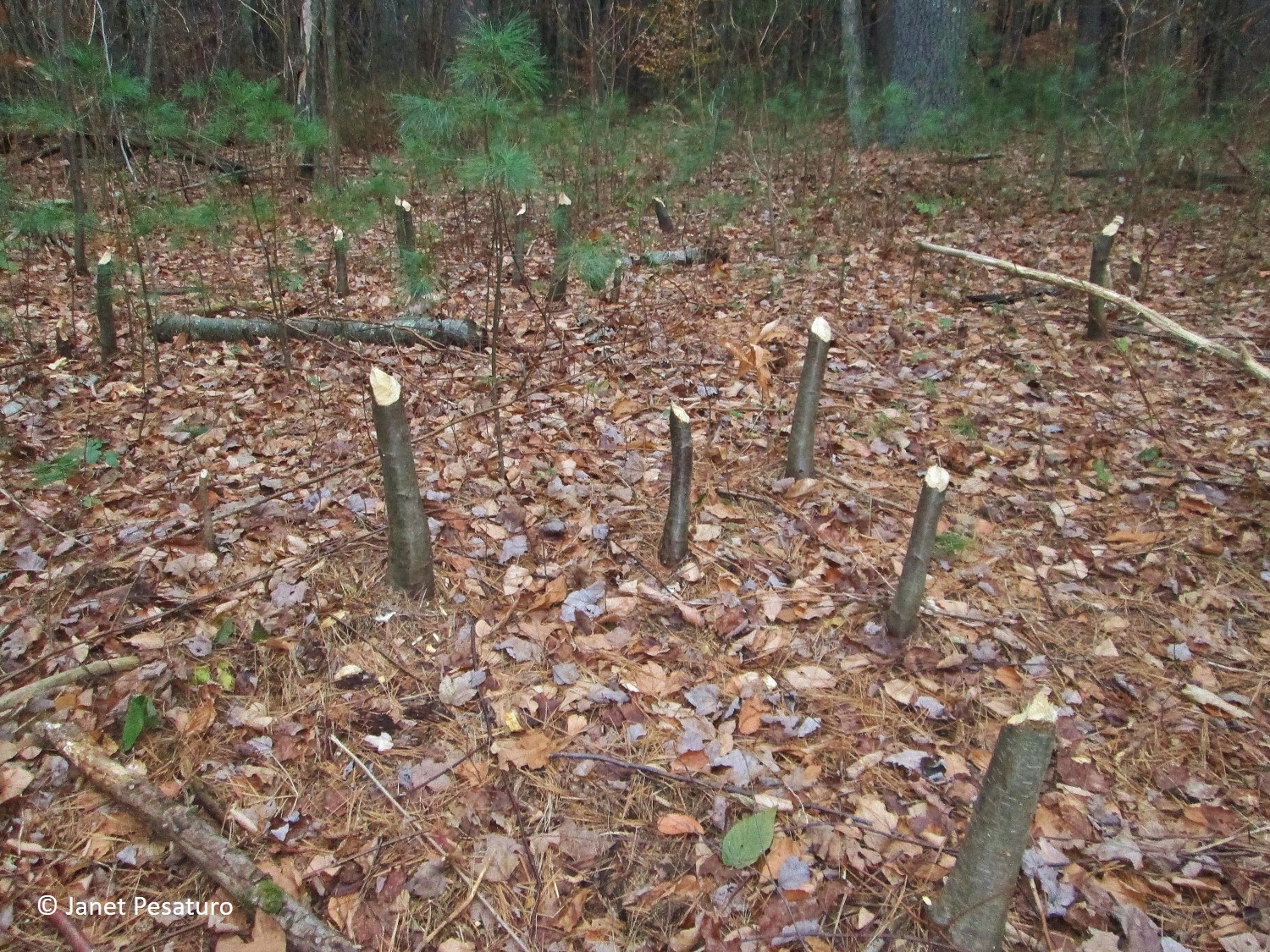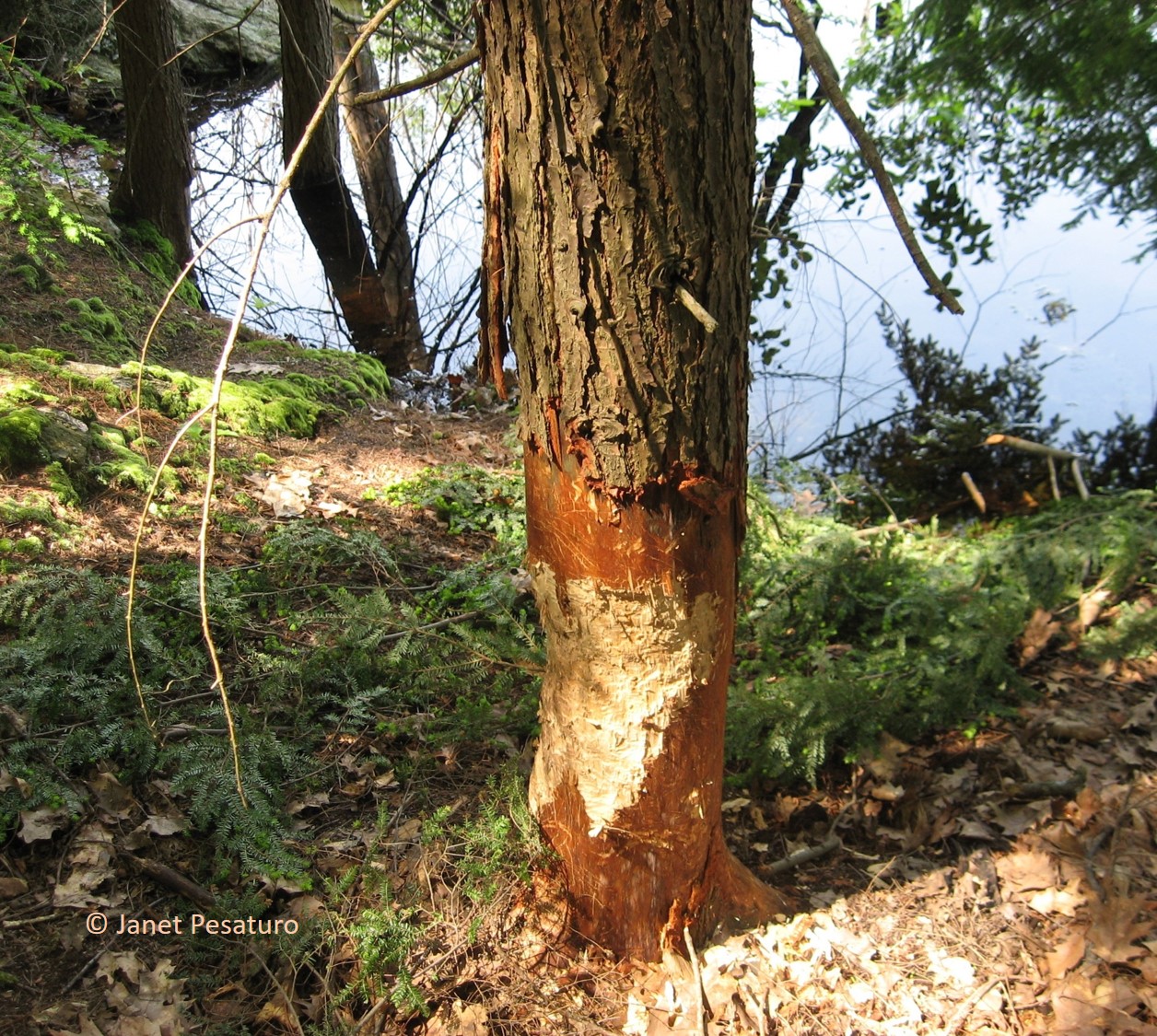Tree Preferences of the Beaver

A North American beaver at the edge of its pond. (Captured with IR triggered Canon 60D and Nikon SB28 flashes)
The North American beaver’s winter diet of tree bark is familiar to many, but less well known are its distinct preferences. Generally, it prefers deciduous trees over conifers, but from the beaver’s perspective, not all hardwoods are created equal. The exact ranking may vary over the animal’s range, but generally, aspens top the list, willows are a close second, and red maple is near the bottom. Other hardwoods rank somewhere between willows and red maple, and conifers are taken in quantity only to avoid starvation.

Here, many black birches have been felled by beavers. Black birch is more desirable than conifers, but much less desirable than aspens and willows. However, few other hardwoods remain for the resident beavers to choose from.
Sometimes beavers appear to be felling less desired trees, like red maple, or even conifers, with wild abandon. But this is because they have no other choice. Beavers do resort to less preferred trees when tastier trees are unavailable (and the reason preferred tree species are unavailable may be because beavers have long since cut them down). So when you visit a beaver pond, look not only at the trees that beavers are cutting, but also at the variety of tree species that are present. You probably won’t see much red maple consumption if aspens are available, nor much conifer felling if plenty of deciduous trees are available. Beavers cannot subsist for long on conifers alone, so heavy reliance on them usually presages the beavers’ disappearance.

A beaver has been working on this eastern hemlock around a pond where few deciduous trees remain.
As you consider the trees around an active beaver pond, look carefully and you may find some trees that were merely sampled – gnawed a bit, and then left alone. These rejected trees tend to be less desirable than other available tree species. Beavers likely determine this by scent and taste, and cutting into the bark helps them do this. In an interesting experiment that drives home the importance of scent, painting aspen logs with an extract of red maple bark caused beavers to reject them.

A beaver has tasted this red maple before deciding to leave it be. Red maple is one of the least desirable hardwoods.
Here’s a trail camera video of a beaver cutting some black birches in Massachusetts. Black birch is not a favorite, but it’s better than the red maple, eastern hemlock, and white pine that dominate the forest around this particular beaver pond.
Interested in beavers? See video of a beaver constructing a scent mound.
Sources and further reading
Muller-Schwarze, D. and L. Sun. The Beaver: Natural History of a Wetlands Engineer. Ithaca, NY: Cornell University Press, 2003.
Muller-Schwarze, D., B. A. Schulte, L. Sun, A. Muller-Schwarze and C. Muller-Schwarze. “Red Maple (Acer rubrum) Inhibits Feeding by Beaver (Castor canadensis).” Journal of Chemical Ecology. 20 (1994): 2021-2034.

Valuable info. Fortunate me I discovered your website by accident,
and I’m surprised why this coincidence did not took place in advance!
I bookmarked it.
Wndering d beavers eat a sumac tree
I don’t know. I might depend on the particular species of sumac, and what other trees are available to them in the immediate area.